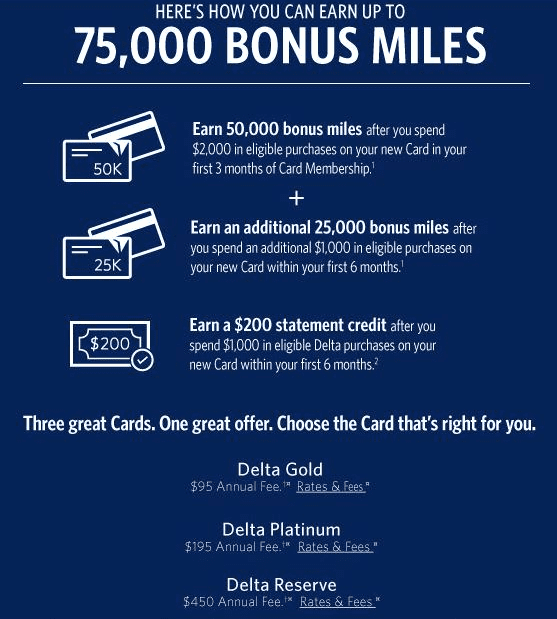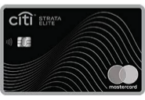Today’s question comes from BenBaril from reddit.com/r/churning
Question:
Last year I had about 50k spend on my Amex SPG card, which yielded me a decent number of points. I definitely made way more than the annual fee in free nights from Starwood, which was nice. But I also feel like I’m not getting the most out of my spending, hence this question.
My spending summary showed about 14k in travel, 10k in restaurants, 4k in groceries, 3k in rail travel (which is part of transportation…why is this not categorized with regular travel?) and the rest split evenly among the other categories.
I should mention that I do a bit of travelling for work (take the train a bunch, and maybe 12 flights a year for work) and can use my personal card for those.
I’ve read a lot about the Chase Sapphire Preferred card (CSP), and I’ve personally considered getting the Amex Platinum card with membership rewards.
So, with my spend, what do you think would be a good option?
Answer:
Before we start let’s get an accurate breakdown of your expenses.
- $17,000 travel (we’ve added the $3,000 in rail expenses here as all credit card issuers should count this as a travel expense)
- $10,000 restaurants
- $4,000 groceries
- $9,000 miscellaneous
- Total: $50,000
Now we have that straightened out, let’s have a look at some options. I’m going to give you three different ones: Chase Sapphire Preferred, Barclays Arrival & American Express Platinum.
Contents
Chase Sapphire Preferred®
The Chase Sapphire Preferred has an annual fee of $95 which is waived for the first year. It also has a sign up bonus of 40,000 points when you spend $3,000 within three months, which you’ll easily hit. Let’s look at how many points you’ll get from each expense:
- $17,000 travel (2x points) = 34,000 points
- $10,000 restaurants (2x points) = 20,000 points
- $4,000 groceries = 4,000 points
- $9,000 miscellaneous = 9,000 points
Total: 67,000 points + 40,000 sign up bonus
- 107,000 points for the first year then
- 67,000 + $95 (annual fee) for year two onward
You’ll also receive a 7% annual dividend on the earned points (67,000 points) in February every year. Let’s assume that you’ll get that on 80% of the total points for the first year and then 100% year two onward.
- Year one Annual dividend bonus (67,000 * 0.8) * 0.07 = 3,752 bonus points
- year two Annual dividend bonus (67,000 * 1) * 0.07 = 4,690 bonus points
Total Points For The Chase Sapphire Preferred Including Dividend Bonus:
- Year one = 110,752 chase UR points
- Year two onward = 71,690 chase UR points + an annual fee of $95
American Express Platinum Card®
The Platinum card has an annual fee of $450 which is not waived. To make up for this, it does have a number of annual bonuses:
- Free Priority Pass™ Select Membership (access to over 600 lounges worldwide. You still need to pay access these lounges, prices start at $29 per visit)
- $200 Airline Fee credit every year. You select your favorite airline with American Express and they’ll give you $200 credit with that airline every year, this can only be used for incidental charges (e.g baggage fees, in-flight food & beverage fees and day passes for airport lounges)
They also offer a number of first year bonuses, you’ll receive these after you spend $2,000 within the first three months:
- 25,00 American Express Membership Rewards® rewards points
- Free year of amazon prime ($79)
Amazon gives you 1 point for every $1 spent, apart from purchases made through travel website where you’ll receive 2 points for every $1 spent. For the purposes of this question, we’re going to assume all of you travel expenses can be paid for through the travel website – the likelihood of this is very slim so keep this in mind.
- $14,000 travel (2x points) = 34,000 points
- $10,000 restaurants = 10,000 points
- $4,000 groceries = 4,000 points
- $9,000 miscellaneous = 9,000 points
Total = 57,000 points + 25,000 first year sign up bonus
- First year: 82,000 points + free year of amazon prime + $200 in incidental airline charges + Priority Pass select + $450 annual fee
- Second year: 57,000 points + $200 in incidental airline charges + Priority Pass select + $450 annual fee
This’ll drop by 14,000 points if you can’t book your regular travel through the american express website.
Barclaycard® Arrival™ World MasterCard – Annual Fee
This card has an annual fee of $89 which is waived for the first year. It also comes with a 40,000 point bonus when you spend $1,000 within three months.
- $17,000 travel (2x points) = 34,000 miles
- $10,000 restaurants (2x points) = 20,000 miles
- $4,000 groceries (2x points) = 8,000 miles
- $9,000 miscellaneous (2x points) = 18,000 miles
Total: 80,000 miles + 40,000 mile sign up bonus
- Year one: 120,000 miles
- Year two onward: 80,000 miles
You also get 10% of your points back when you redeem them for travel (which you would definitely do, as it makes the points worth a flat 2¢ instead of 1¢ when you redeem for statement credit – which are your only two options with these miles).
- Year one: 10% miles back (120,000 * 0.1): 12,000 miles
- Year two onward 10% miles back (80,000 * 0.10): 8,000 miles
Total points for the Barclaycard® Arrival™ – Annual Fee including 10% miles back
- Year one: 132,000 miles
- Year two onward: 88,000 miles + $89 annual fee
The Verdict
So which card is the best option? That’ll depend a bit on how much you value certain points. But here is a table that breakdowns the options:
| Chase Sapphire Preferred | Barclay arrival | American Express Platinum | |
|---|---|---|---|
| Year one | 110,752 Chase UR points | 132,000 Barclay Miles | 82,000 Membership Reward points + free year of amazon prime + $200 in incidental airline charges + Priority Pass select + $450 annual fee |
| Year two onward | 71,690 Chase UR points + $95 Annual Fee | 88,000 Miles + $89 Annual Fee | 57,000 points + $200 in incidental airline charges + Priority Pass select + $450 annual fee |
How Much Are The Points Worth?
Chase UR points are worth a minimum of 1¢ (this is what they can be redeemed for in statement credit). They are extremely flexible as they can be transferred at a 1:1 ratio with a lot of airline & hotel programs.
Barclay Miles are worth 1¢ each when you redeem for statement credit (for travel expenses, 0.5¢ when you redeem them for non-travel expenses. Flights, accommodation and anything else that is coded as travel counts).
Who Is The Winner?
I’d personally go for the Chase Sapphire Preferred as the points are much more flexible, there also isn’t a lot of points difference between this and the Arrival (~20,000 first year, ~16,500 year two onwards).
The American Express card comes in last place for my mind, the annual fee of $450 is way to high unless you plan on using the lounges a lot. You’d also need to use the $200 incidental bonus, but chances are your work is paying for these expenses anyway.
My advice would be to apply for the Chase Sapphire Preferred AND the Arrival card. Put all of your travel and dining expenses on the chase sapphire preferred, where you’ll earn 2x chase UR points and then all of your other expenses on the Arrival card to earn 2x miles on those.






